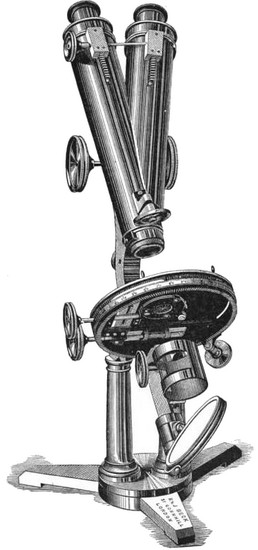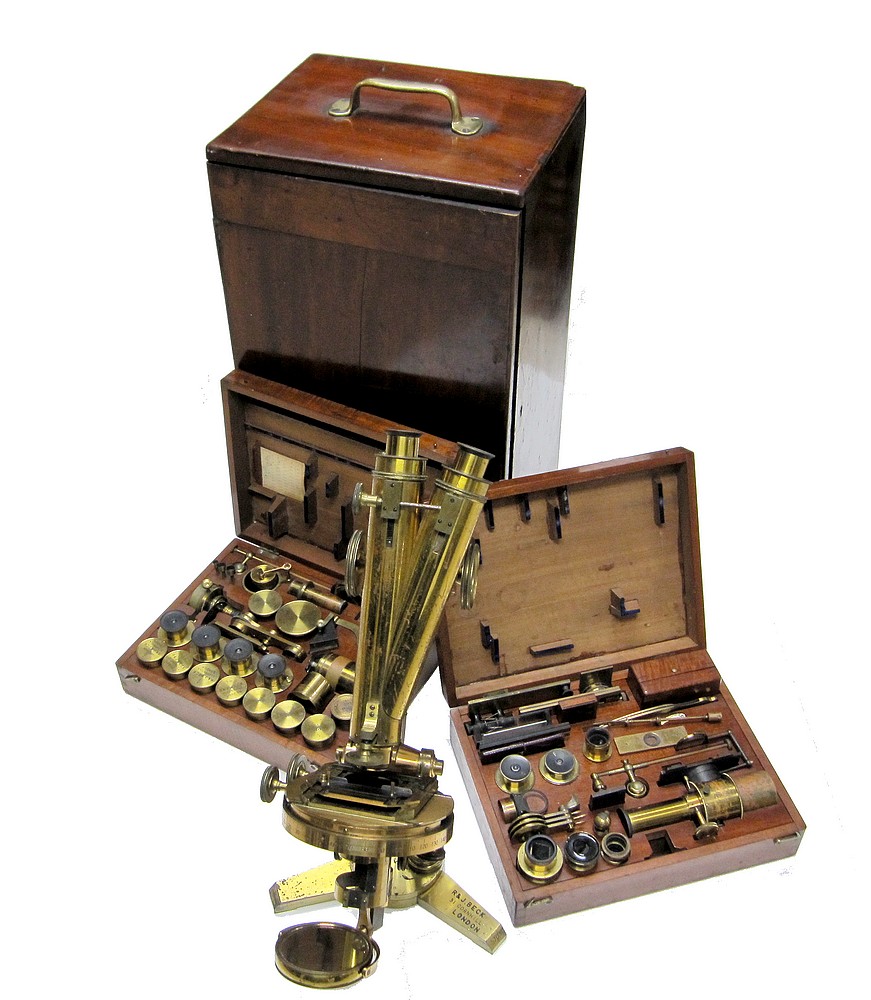
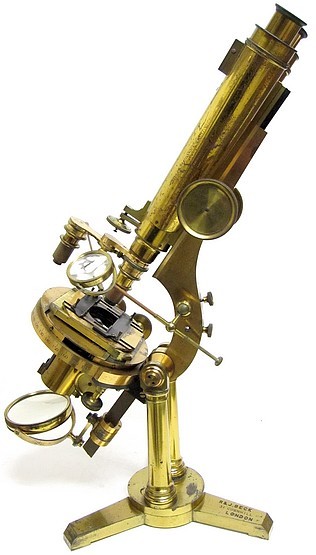
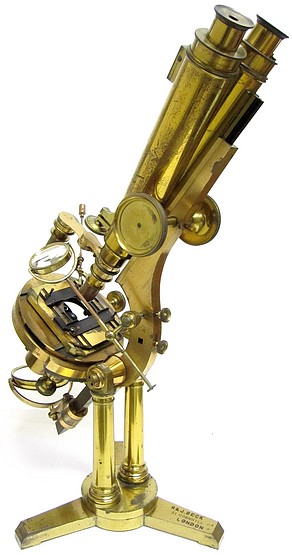
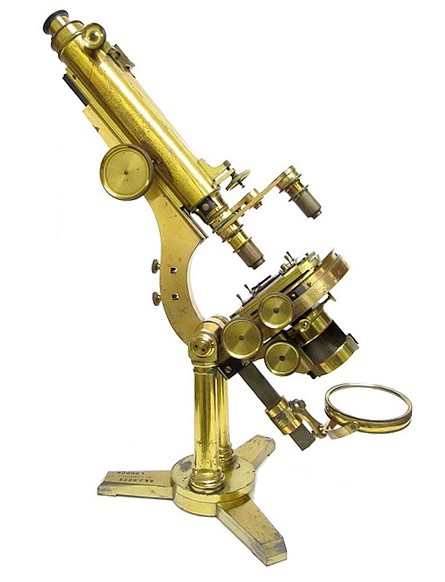
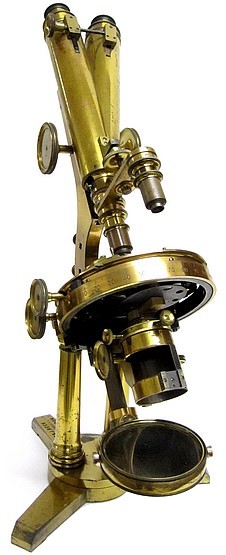
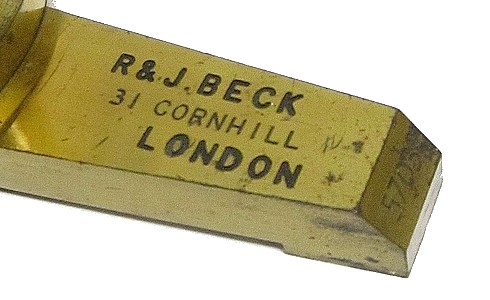
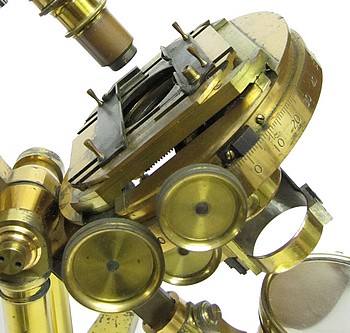
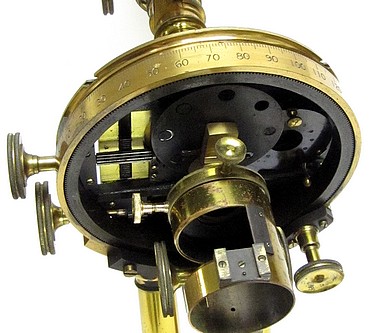
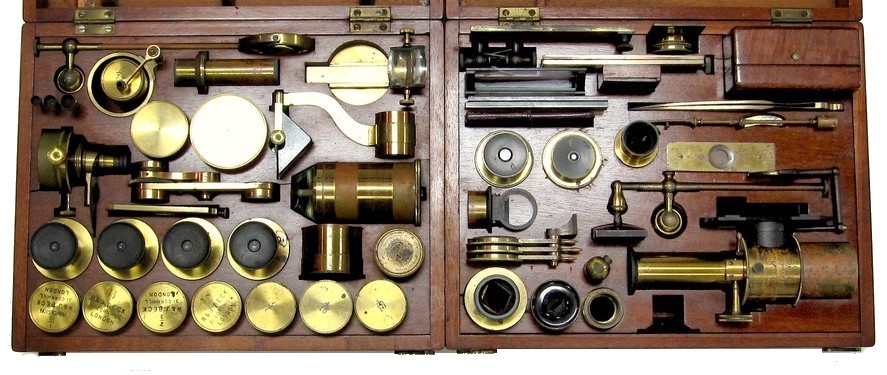
Among the accessories are included four Beck objectives (3, 1 1/2, 2/3, and 1/10-inch), three W. Wales objectives (4/10, 1/5, and 1/10-inch), and two Gundloch objectives (1/2 and 1/16-inch {immersion}). The presence of American made objectives suggests that this microscope was used in that country. Other accessories include three matched pairs of eyepieces, two additional very high power eyepieces labeled D and F, an achromatic condenser with centering adjustments, a parabolic reflector in a brass case, two eyepiece micrometers, a double objective changer, two Lieberkuhn illuminators, a right angle prism mounted to replace the mirror, a sub-stage dark-well holder and three dark-wells, a stage bullseye condenser, an erector, Wenham's parabolic reflector for dark field use, a draw-tube for monocular use, an Amici prism, a Beck-Sorby microspectroscope, a camera lucida, a sub-stage polarizing prism in a rotating holder, an eyepiece analyzing prism, a rotating analyzing prism mounting over the objective, a vertical illuminator, a Darker's series of selenites and holder, a stage forceps, a hand forceps, a limb mounted silvered side reflector, a stage mineral holder, a Maltwoods Finder in a leather case, a parallel compressor with a small wood box containing extra glasses for the compressor, a simple live box, large glass trough for wet work, and a separately cased Beck live trap. Under the stage is attached an iris diaphragm on a swing-away mounting. The accessories can be identified with reference to the accessory section of the R. & J. Beck 1882 catalog. A portable version of this microscope is also represented in this collection.
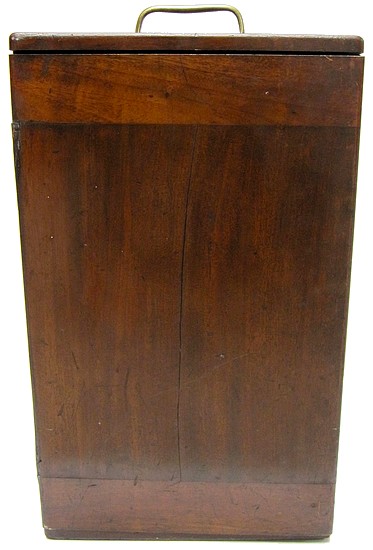
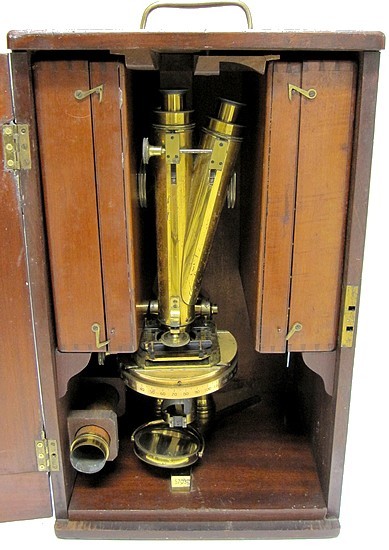
Extracted from the 5th edition of Carpenter's The Microscope, 1875:
Messrs. Becks' First-class Microscope- It was by this Firm that the Jackson model was first adopted, for which the Author has already expressed his preference; the support of the Body along a large proportion of its length, upon the substantial Limb to which the Stage is securely attached, giving it a decided advantage in steadiness over any form of instrument (not exceeding it in massiveness) in which the Body is attached at its lower extremity only to an Arm between which and the Stage there is no fixed connection; whilst the Rack-and-pinion movement giving the coarse adjustment can be made to work more easily on this construction, than where it is requisite that the stem moved by it should be fitted as tightly as possible. On the other hand, it must be admitted that the 'fine' adjustment can be more effectually made by the longer leverage provided in the Ross model, than by the attachment of the screw to the lower end of the body, as in the instrument before us. The Stage of the older form of this instrument was furnished with the usual traversing movements, and was made (by an arrangement first devised by Messrs. Smith and Beck, and since adopted by other makers) so thin as to allow of extremely oblique illumination; but although the platform which carries the object could be made to rotate upon the traversing apparatus, yet the object was liable to be thrown out of centre by this rotation. This has been completely remedied in the newer pattern shown in Plate VII. the Stage of which has a nearly complete rotation in the optic axis of the instrument. This rotation is effected by a milled-head and pinion; which, by a shifting movement can be thrown out of gear, so as to allow the Stage to be rotated rapidly by hand, which is often advantageous. This Stage is furnished with a graduated circle, to which a Vernier can be attached when desired for the measurement of angles.
